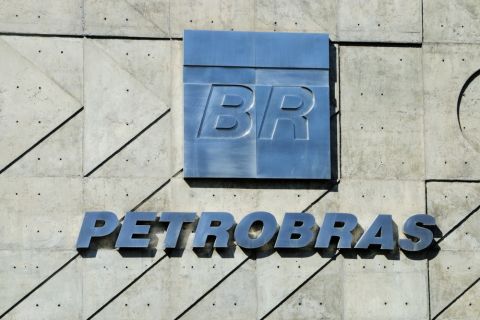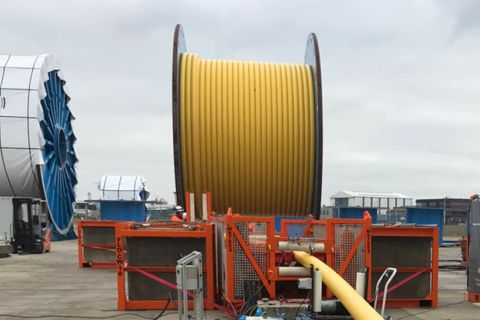Presented by:

[Editor's note: A version of this story appears in the March 2021 issue of Oil and Gas Investor magazine. Subscribe to the magazine here.]
Let’s talk repair jobs. No doubt at some point, you’ve gone to the hardware store to pick up a tub of Spackle. You used this handy little putty item, patented in 1928, to fill in holes or smooth over cracks and imperfections in the sheetrock before you had to paint a wall.
Today, raising money for traditional oil and gas companies is full of holes and public markets need a big repair with some kind of Spackle. Likewise, the ability of former Wall Street darlings, the energy infrastructure companies (pipelines, gas processing plants, midstream in general) to raise money has also cracked. Because most of the necessary and massive North American oil and gas pipeline buildout is complete, construction is slowing down and what’s left to be finished has been stopped by government roadblocks.
So today “energy infrastructure” has turned green, taking on a new meaning: any facilities or equipment for electric vehicle (EV) charging stations, wind farms or solar arrays, or battery storage. And this North American infrastructure buildout is going to be massive.
But even for the green transition companies, the market is imperfect and also in need of something like Spackle, as traditional IPOs have been in short supply. But it’s no problem. Enter the special purpose acquisition company (SPAC), a blank check company. SPACs fill in the holes and then some. This repair is now the preferred way to raise money, go public and complete a merger.
ALSO IN THIS ISSUE:
Oil and Gas Investor: The Great SPAC Comeback
Oil and Gas Investor Energy Capital: Greenlighted
A report on SPACs from the Skadden, Arps, Slate, Meagher & Flom LLPs law firm cited data from research firm Deal Point Data that said there were 59 SPAC IPOs in all industries in 2019 and the number rose to 247 in 2020.
Bloomberg just reported that due to this mania, SPACs in all industries raised $26 billion in January 2021 alone. Dealogic said 91 SPACs priced that month.
Many SPACs are green—more than a dozen are on tap for EV cars and trucks alone— and they will be armed with billions of investible dollars. They are already hunting for the green acquisition that will give them assets and income on a public platform.
But many market mavens think the SPAC mania bubble is about to burst. Will the green SPACs be able to survive, close the right deal and create a decent return? Or will they pop, going the way of the infamous crash and burn we just saw for the Reddit-caused mania for GameStop?
Connections between the traditional oil and gas firms and automakers and the green companies are numerous as investors jump into the space, including many that formerly were devoted only to oil and gas. More is happening than we know.
Take the example of Proterra Inc., which was backed early on by NGP Energy Technology Partners, an arm of NGP Energy Capital, which we know as a force in oil and gas private equity funding. Recently Proterra was acquired by ArcLight Energy Transition Corp., (a SPAC formed by another upstream and midstream private equity firm), thus enabling Proterra to begin trading on the Nasdaq soon. Proterra, around for 17 years, makes electric buses and parts, and related EV charging equipment and software.
In addition to the SPAC, further investment came to Proterra in the form of a private investment in public equity (PIPE). The PIPE investors were an interesting and diverse group: Daimler Truck, GM Ventures and BMW Ventures, Mitsui, Panasonic and funds from Cowen & Co.’s Sustainable Advisors subsidiary. That tells you where this whole green thing is going. Car manufacturers, international oil companies, governments and institutional investors are jumping on the green bandwagon.
Chargepoint is another example. It just raised $127 million in PIPE funding from a mix of existing investors from the oil and gas, utilities and venture industries, including American Electric Power, Chevron Technology Ventures, Clearvision and Quantum Energy Partners.
We cannot list them all, but at press time another SPAC went public for $345 million, ECP Environmental Growth Opportunities Corp., formed by Energy Capital Partners Management LP. Now it’s on the hunt too.
If you are a green company, hordes of SPAC owners with sacks full of money are beating down your doors. Valuations are sky high.
The problem: These investors are not recognizing how much value is still in oil and gas right now—the most in years. Many of these newly disciplined large-cap E&P companies are in good shape and getting better. Their stocks have been beaten down, but they are returning cash flow to their investors. They are ready for the future. Now’s the time to take note.
Recommended Reading
Exxon Versus Chevron: The Fight for Hess’ 30% Guyana Interest
2024-03-04 - Chevron's plan to buy Hess Corp. and assume a 30% foothold in Guyana has been complicated by Exxon Mobil and CNOOC's claims that they have the right of first refusal for the interest.
Exxon Ups Mammoth Offshore Guyana Production by Another 100,000 bbl/d
2024-04-15 - Exxon Mobil, which took a final investment decision on its Whiptail development on April 12, now estimates its six offshore Guyana projects will average gross production of 1.3 MMbbl/d by 2027.
Exxon Mobil Green-lights $12.7B Whiptail Project Offshore Guyana
2024-04-12 - Exxon Mobil’s sixth development in the Stabroek Block will add 250,000 bbl/d capacity when it starts production in 2027.
Petrobras to Step Up Exploration with $7.5B in Capex, CEO Says
2024-03-26 - Petrobras CEO Jean Paul Prates said the company is considering exploration opportunities from the Equatorial margin of South America to West Africa.
Exxon Mobil Guyana Awards Two Contracts for its Whiptail Project
2024-04-16 - Exxon Mobil Guyana awarded Strohm and TechnipFMC with contracts for its Whiptail Project located offshore in Guyana’s Stabroek Block.





